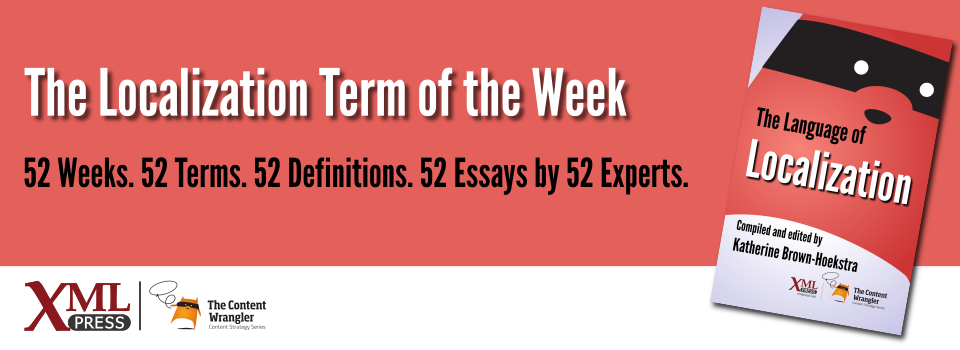What is it?
The language into which a product is localized.
Why is it important?
You cannot talk about translation, which is at the core of the localization process, without defining the target language(s) because this will guide the decision of which audience you intend to reach.
Why does a technical communicator need to know this?
A single source language can be rendered into one or more target languages, depending on the budget and scope of reach. The process of translation and localization creates the content in the target language by rendering software code, website, game, audio, video, or any other localizable content so that end users can read, listen, and make the most of their experience. The combination of a source language plus a target language and its locale creates a language pair.
Before planning a localization strategy, you must define your target audience and the language(s) they speak. Typically, companies select the target languages and locales based on the markets that they want to reach with a particular product.
Make sure that the translators are well-versed in the target language (preferably native speakers), because they must have the capacity to render the meaning of the original text into the translated text, making sure that the translated test meets the following criteria:
- Reads as fluent.
- Follows the linguistic characteristics of the locale.
- Incorporates terminology preferences of the target audience.
- Obeys stylistic choices.
- Uses industry jargon correctly.
- Meets local requirements, including those of a legal or regulatory nature.
References
- [Jacko 2012] Jacko, Julie A. (2012). "Speech and Language Interfaces, Applications, and Technologies" in Human Computer Interaction Handbook: Fundamentals, Evolving Technologies, and Emerging Applications. Third Edition. CRC Press. Chapter 16.
- [Quora 2016] Quora Entry: An interesting discussion on a translator’s capabilities to handle the
perfect translation
while not being a native speaker. - [Tustison 2015] Tustison, Clint (2015). How to Improve Your Target Language and Why You Should Even Care. Blog post on Translation Rules website.
- [Peterson 2004] Peterson, David (2004). Source Language versus Target Language Bias. Petersen is a member of the Japan Association of Translators (JAT) with a PhD from the University of Malta. In this Translation Journal article, he discusses how bias affects interpretation and translation of both the source and target language in different ways.
- [Mediawiki translation tools] Content translation/Translation tools: Media Wiki. Extensive information on Content translation/Translation tools.
- [Ccaps] Localization Style Guides in English, Spanish, and Portuguese: Ccaps also offers extensive resources for customers and vendors, in particular the Ccaps Style Guide for English, Spanish, and Portuguese.
- [Esselink 2000] Esselink, Bert (2000). A Practical Guide to Software Localization. Although slightly outdated, this is the undisputed industry bible.

